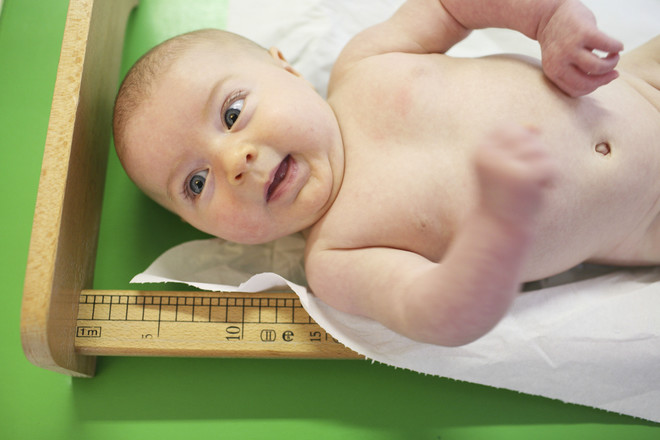The Basics of a Memo for Parents
The first parameters of the baby are weight2500-3800 g and height 48-55 cm. In the maternity hospital, the doctor will tell you if everything is OK with these indicators. When you are at home, you need to track these figures yourself, without waiting for the next visit to the pediatrician. The growth of a child by months up to a year can be measured inat home with a centimeter Photo: Getty If everything is more or less clear with the weight, then tracking the growth can be difficult. To measure the baby, follow these steps:
The growth of a child by months up to a year can be measured inat home with a centimeter Photo: Getty If everything is more or less clear with the weight, then tracking the growth can be difficult. To measure the baby, follow these steps:
The resulting size must be compared with the indicatorsin the table, which are given separately for children of different sexes. The first child causes a lot of worries. You need to understand that if there are deviations, the doctor will definitely draw your attention to them. Do not miss regular check-ups at the clinic, where the pediatrician monitors the baby's weight and height. Start a notebook where you note changes in height, weight and nutrition. If something worries you, ask the doctor questions.
Basic Parameters for Boys
Standard growth and weight indicators for children of different sexes differ slightly according to WHO data. Normal growth intervals for male infants vary from 0 to 12 months:
- Height at birth - 48.0-51.8 cm;
- 1 month – 52.8–56.7 cm;
- 2 months – 56.4–60.4 cm;
- 3 - 59.4-63.5 cm;
- 4 - 61.8-66.0 cm;
- 5 - 63.8-68.0 cm;
- 6 - 65.5 - 69.8 cm;
- 7 - 67.0-71.3 cm;
- 8 - 68.4 - 72.8 cm;
- 9 - 69.7-74.2 cm;
- 10 - 71.0 - 75.6 cm;
- 11 - 72.2 - 76.9 cm;
- 12 - 73.4 - 78.1 cm.
As a child ages, the growth intervals become wider.
Basic parameters for girls
Normal growth ranges for female infants range from 0 to 12 months:
- Height at birth - 47.3-51.0 cm;
- 1 month – 51.7–55.6 cm;
- 2 months – 55.0–59.1 cm;
- 3 - 57.7-61.9 cm;
- 4 - 59.9-64.3 cm;
- 5 - 61.8-66.2 cm;
- 6 - 63.5 - 68.0 cm;
- 7 - 65.0-69.6 cm;
- 8 - 66.4-71.1 cm;
- 9 - 67.7-72.6 cm;
- 10 - 69.0-73.9 cm;
- 11 - 70.3-75.3 cm;
- 12 - 71.4 - 76.6 cm.
As a child ages, the growth intervals become wider.
What determines the growth of the baby
When studying the table, do not panic if some parameters do not correspond to your baby's data. Height and weight depend on many factors:
- Heredity. High parents, most likely, children will be higher, and they can grow faster. Miniature mom and dad, whose growth is below average, will produce a minor child.
- The child, whose diet is balanced, and who receives all the necessary vitamins and minerals, will develop better than the newborn, deprived of it.
- Congenital diseases can inhibit the development of the baby.
In the latter case, the doctor will tell you the right thing to do.whether the baby is developing within the framework of his illness. The birth of a child is associated with pleasant chores and concern for his health. There are standard indicators for each age of the baby. Small deviations from the norm, as a rule, have certain reasons that do not affect the health of the baby.









